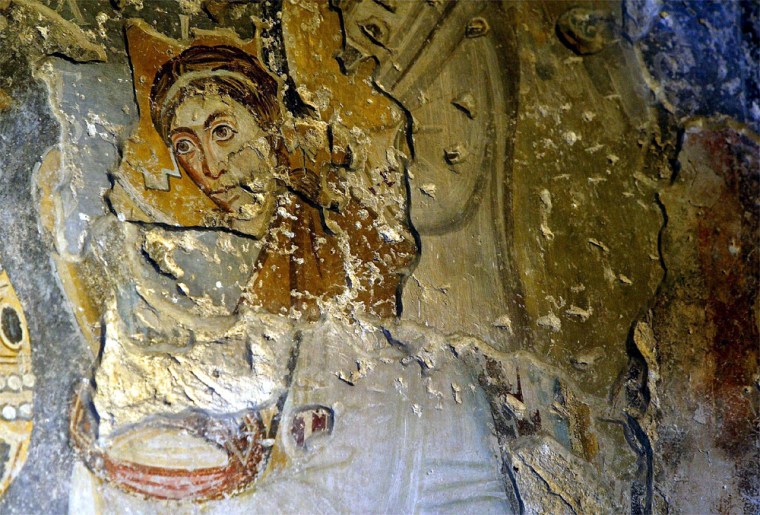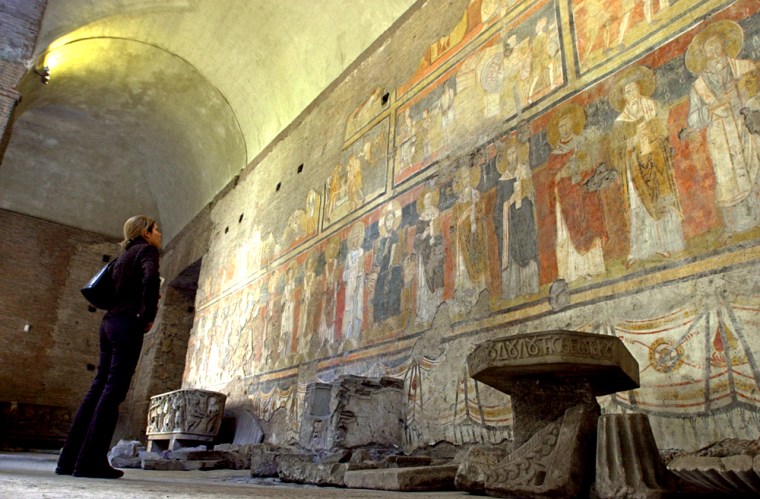After 12 centuries under rubble and 24 years of restoration Rome opened the doors on Thursday to Santa Maria Antiqua -- the oldest church in the Roman Forum's ancient ruins -- and its rare collection of early medieval art.
An earthquake buried the church and its numerous Byzantine and early Christian frescoes in 847 and it remained untouched until excavation and reconstruction began in 1900.
Much of the structure had survived and restorers have been hard at work on the interior since 1980 with the site to reopen to the public on April 10 until the end of May.
"The Santa Maria Antiqua is stunning testimony to the richness of a period of which there remain few other details," said art historian Maria Andaloro.
"The opening will give the double opportunity to the public to see not only the church but also the restoration at work," Andaloro said.

While many other churches in Rome have been knocked down, destroyed or rebuilt over the centuries, Santa Maria Antiqua's 12 centuries out of action meant it provided a perfect snapshot of early medieval artwork.
Today, the church, hidden in the shade of the central Palatine hill, has a new roof and structural supports but houses some 2,700 sq. ft of frescoes that date from its foundation in the mid-sixth century until before the earthquake.
Popes including Martin I, John VII, and Zaccarias ordered numerous redecorations of its interior.
"It is an essential reference point to that period, as each pope had the images renewed with his own iconographic style," said Andaloro.
Up to six layers of artwork coat parts of the crumbling walls with an austere image of an enthroned Virgin adored by angels the only painting that dates from the church's foundation.
Opponents to the veneration of religious icons destroyed much religious art during the Iconoclasm movement of the 8th and 9th centuries.
But while Santa Maria Antiqua escaped that, damp has damaged around 60 percent of the paintings and restorers expect to be hard at it until the end of 2007 on the $1.60 million clean-up job.
